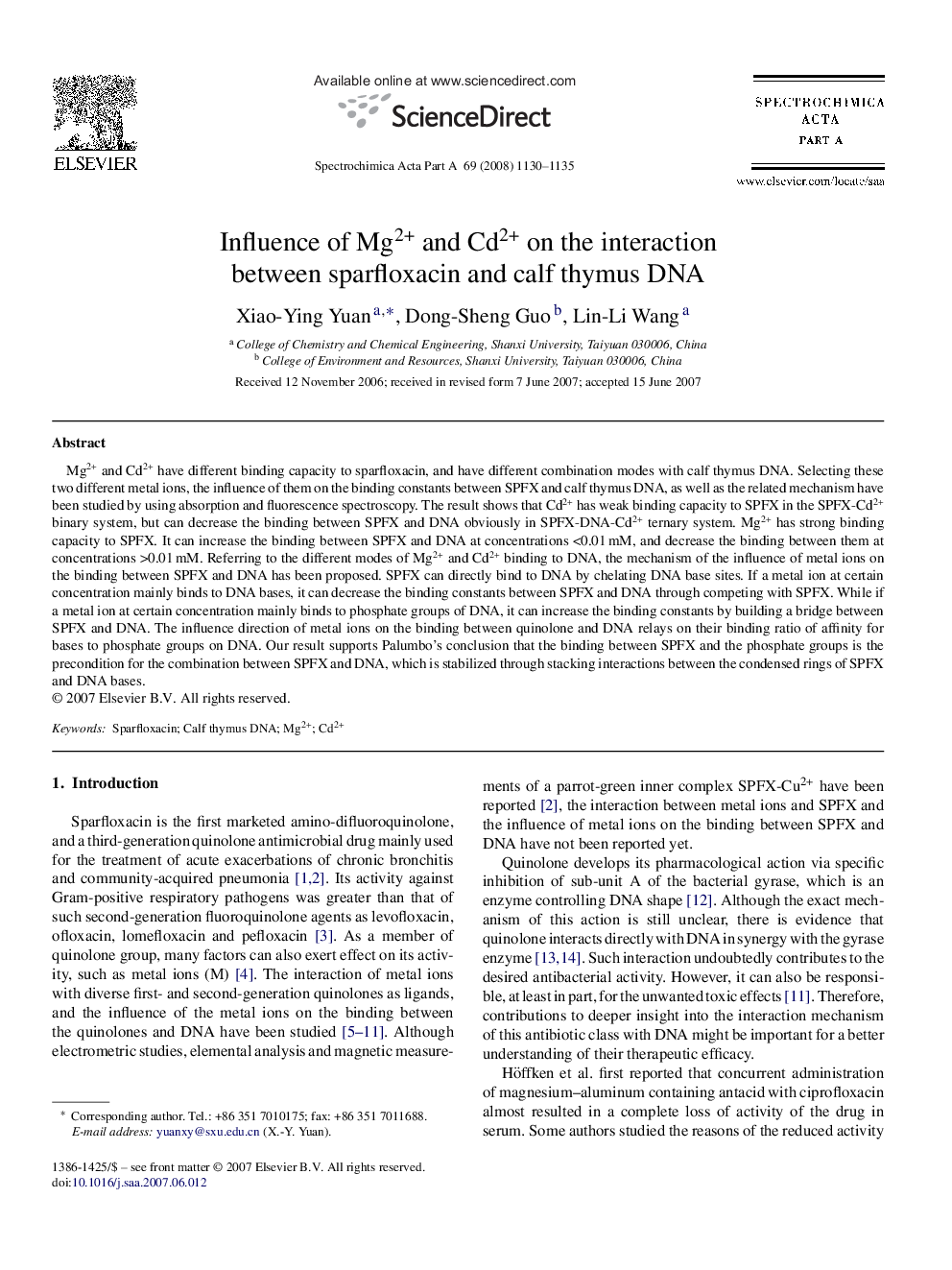| Article ID | Journal | Published Year | Pages | File Type |
|---|---|---|---|---|
| 1237794 | Spectrochimica Acta Part A: Molecular and Biomolecular Spectroscopy | 2008 | 6 Pages |
Abstract
Mg2+ and Cd2+ have different binding capacity to sparfloxacin, and have different combination modes with calf thymus DNA. Selecting these two different metal ions, the influence of them on the binding constants between SPFX and calf thymus DNA, as well as the related mechanism have been studied by using absorption and fluorescence spectroscopy. The result shows that Cd2+ has weak binding capacity to SPFX in the SPFX-Cd2+ binary system, but can decrease the binding between SPFX and DNA obviously in SPFX-DNA-Cd2+ ternary system. Mg2+ has strong binding capacity to SPFX. It can increase the binding between SPFX and DNA at concentrations <0.01Â mM, and decrease the binding between them at concentrations >0.01Â mM. Referring to the different modes of Mg2+ and Cd2+ binding to DNA, the mechanism of the influence of metal ions on the binding between SPFX and DNA has been proposed. SPFX can directly bind to DNA by chelating DNA base sites. If a metal ion at certain concentration mainly binds to DNA bases, it can decrease the binding constants between SPFX and DNA through competing with SPFX. While if a metal ion at certain concentration mainly binds to phosphate groups of DNA, it can increase the binding constants by building a bridge between SPFX and DNA. The influence direction of metal ions on the binding between quinolone and DNA relays on their binding ratio of affinity for bases to phosphate groups on DNA. Our result supports Palumbo's conclusion that the binding between SPFX and the phosphate groups is the precondition for the combination between SPFX and DNA, which is stabilized through stacking interactions between the condensed rings of SPFX and DNA bases.
Keywords
Related Topics
Physical Sciences and Engineering
Chemistry
Analytical Chemistry
Authors
Xiao-Ying Yuan, Dong-Sheng Guo, Lin-Li Wang,
